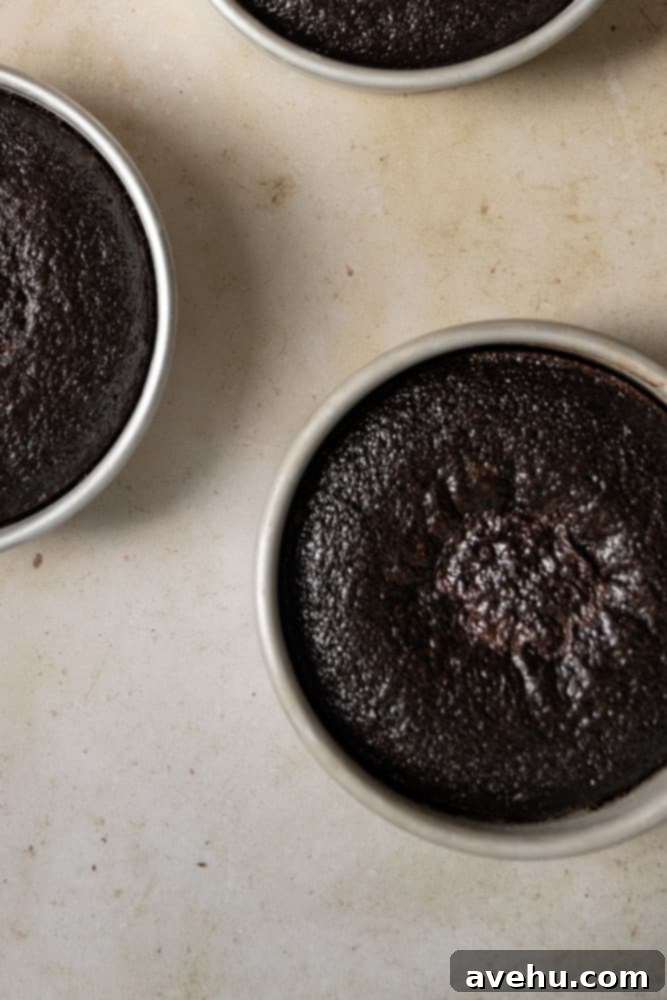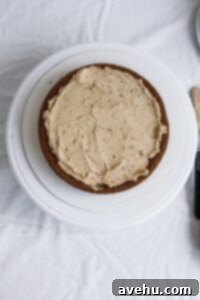The Ultimate Guide to Preventing Sunken Cakes: Expert Tips & Troubleshooting for Perfect Baking
There’s nothing quite as disheartening for a baker as opening the oven door, filled with anticipation, only to find your beautiful cake has sunk in the middle. This common baking dilemma can turn excitement into disappointment in an instant. Understanding why cakes sink and, more importantly, how to prevent and even fix them is crucial for achieving baking success. This comprehensive guide will delve into the science behind a collapsing cake, equip you with essential troubleshooting tips, and show you three clever ways to salvage a sunken dessert. Say goodbye to baking woes and hello to perfectly risen, delicious cakes!
Baking is often described as both an art and a science, and nowhere is this more evident than when a cake decides to betray your efforts by sinking. As a pastry chef with over 12 years of experience, I’ve encountered almost every baking mishap imaginable. From uneven browning to crumbly textures, numerous factors can influence the final outcome of a baked good. Among these, a cake sinking in the middle stands out as one of the most frustrating and common challenges home bakers face.
A sunken cake can be more than just an aesthetic issue. It makes decorating incredibly difficult, as a perfectly level surface is essential for smooth frosting and elegant presentation. A cake with a noticeable dip in the center simply doesn’t convey the same polished appeal as a cake that has risen beautifully and evenly. This can be particularly disheartening when you’ve invested significant time and energy into creating stunning homemade cake recipes.
The good news is that a sunken cake doesn’t have to be your baking nemesis. With a little knowledge and some practical adjustments, you can avoid this common problem and achieve cakes that rise perfectly every time. By understanding the underlying causes, you can proactively address potential issues before they ruin your bake.
Applying these expert troubleshooting tips will empower you to confidently bake a variety of delicious creations, such as a vibrant chocolate cake with sprinkles, a festive confetti cake, or even a classic vanilla bundt cake, all without the worry of them collapsing. Let’s stop asking “why did my cake sink in the middle” and instead learn the fundamental reasons behind it and the practical steps to ensure baking success!
Why Do Cakes Sink? Common Causes and How to Prevent Them
1. The Cake Is Underbaked
One of the most frequent culprits behind a sunken cake is insufficient baking time. When a cake is in the oven, it undergoes a complex series of chemical reactions where proteins set, starches gelatinize, and leavening agents produce gases, creating its structure. This process typically occurs from the outside in. If a cake is removed from the oven too soon, the center may not have fully cooked or set. The internal structure is still delicate and moist, unable to support its own weight, especially after the initial heat source is removed. As the cake cools, this undercooked center collapses, leading to a noticeable dip.
How to avoid: Always ensure your cake is thoroughly baked before taking it out of the oven. Trust the visual and tactile cues, not just the timer. Baking times are often approximate and can vary based on oven performance, pan material, and even altitude. Here are the classic signs of a fully baked cake:
- Edges Pull Away: The edges of the cake will naturally start to pull away from the sides of the baking pan.
- Firm and Springy Top: The surface of the cake will appear golden brown, feel firm to the touch, and gently spring back when lightly pressed in the center. Avoid a jiggly or soft top.
- Clean Toothpick Test: Insert a toothpick or a thin skewer into the very center of the cake. If it comes out clean, or with just a few moist crumbs clinging to it, your cake is ready. A wet batter on the toothpick indicates it needs more time.
2. Your Oven Isn’t Calibrated
An inaccurate oven temperature is a silent saboteur of many baking projects. Most ovens have a thermostat designed to regulate the internal temperature, but these can become inaccurate over time, sometimes by as much as 25-50 degrees Fahrenheit. If your oven thermostat is reading too high, your cake might appear done on the outside while remaining undercooked in the middle. Conversely, if it runs too low, the cake might not rise properly and dry out before it can fully set, or it simply won’t bake through, leading to a collapse. Both scenarios can result in a sunken cake.
How to avoid: The simplest and most effective solution is to invest in an oven-safe thermometer. Place it inside your oven and monitor the temperature during preheating and baking. This will give you an accurate reading of the actual temperature inside your oven, allowing you to adjust your oven’s setting accordingly. For example, if your oven thermometer reads 325°F when your oven is set to 350°F, you know to set your oven slightly higher to achieve the desired temperature.
3. Problems with Baking Soda or Baking Powder (Leavening Agents)
Leavening agents like baking soda and baking powder are the unsung heroes of light and fluffy cakes. They work by producing carbon dioxide gas, which gets trapped in the batter, causing it to rise. If the balance of these agents is off, problems can arise. Over-leavening can cause a cake to rise too quickly and dramatically, creating an unstable structure that collapses under its own weight as it cools. Imagine a balloon inflating too fast and then deflating quickly. Under-leavening, on the other hand, means the cake won’t rise enough, resulting in a dense, heavy texture that might also sink due to insufficient lift.
Another common issue is using old or inactive baking soda or baking powder. These ingredients have a shelf life, and their effectiveness diminishes over time, especially if not stored properly. If your leavening agents are no longer potent, they won’t produce enough gas to lift your cake, leading to a dense or sunken outcome.
How to avoid: Accuracy is paramount when measuring leavening agents; always stick precisely to your recipe’s specifications. Furthermore, regularly check the freshness of your baking soda and baking powder:
- To check baking powder: Pour ½ teaspoon into a small bowl. Add a tablespoon or two of hot water. If it fizzes and bubbles vigorously, it’s still active. If there’s minimal reaction, it’s time for a new container.
- To check baking soda: Pour ½ teaspoon into a small bowl. Add a tablespoon of hot water and a few drops of vinegar or lemon juice (an acid). If it fizzes immediately and strongly, it’s good to use. If not, replace it.
4. The Oven Door Was Opened Too Soon
It’s incredibly tempting to peek into the oven to check on your cake’s progress, especially when the aroma starts filling your kitchen. However, opening the oven door too early can be detrimental to your cake’s structure. For at least the first 25-30 minutes of baking, your cake is still in a critical phase of rising and setting. A sudden rush of cool air from opening the door causes an immediate temperature drop inside the oven. This abrupt change can shock the delicate, unbaked batter, causing the nascent air bubbles to contract and the partially set structure to collapse. The cake essentially deflates before it has a chance to fully stabilize.
How to avoid: Patience is a virtue in baking. Resist the urge to open the oven door for at least the first two-thirds of the total baking time specified in your recipe. If you absolutely must check, do so quickly and gently, ideally only during the last 5-10 minutes of the bake time, to perform the toothpick test. Use your oven light to observe progress without disturbing the internal temperature.
5. The Oven Door Slammed When You Closed It
While seemingly minor, the act of slamming the oven door can have a surprisingly significant impact on a delicate cake. Much like the sudden rush of cool air, a forceful impact can physically disturb the delicate internal structure of a rising cake. The vibrations and quick jolt can cause the fragile air pockets, meticulously created by your leavening agents, to burst or deflate. This sudden disruption prevents the cake’s structure from setting properly, leading to a collapse in the middle. All your careful mixing and precise measurements can be undone by a moment of carelessness.
How to avoid: Always close your oven door gently and deliberately. Treat your oven door as if it holds the most fragile treasure, ensuring a smooth and soft close to avoid any jiggling or jarring of the cake inside. This small act of caution will help ensure your cake rises evenly and maintains its beautiful shape.
6. Overmixing the Batter
Mixing cake batter seems straightforward, but overdoing it can lead to a sunken or tough cake. When you mix flour with liquid, gluten develops. While some gluten is necessary for structure, excessive mixing develops too much gluten, making the batter elastic and chewy. This strong gluten network can trap air bubbles too tightly, or conversely, cause the cake to rise quickly and then fall back on itself as the gluten contracts during baking or cooling. Overmixing also introduces too much air initially, which can lead to a coarse, crumbly texture that struggles to maintain its shape.
How to avoid: Mix your cake batter only until the ingredients are just combined and no streaks of dry flour remain. For most cake recipes, this means mixing on low speed for only a minute or two after adding the dry ingredients. Stop as soon as the batter looks uniform. Some recipes even specify folding in dry ingredients by hand to prevent overmixing.
7. Incorrect Ingredient Ratios or Too Much Liquid/Sugar
Baking is a science, and recipes are essentially chemical formulas. Deviating from these formulas, even slightly, can have profound effects. Adding too much liquid (like milk, eggs, or oil) can make the batter too thin and heavy, struggling to form a stable structure. The excess moisture turns to steam during baking, which creates lift, but if there’s too much, the structure won’t be strong enough to hold it, leading to a collapse.
Similarly, too much sugar can weaken the cake’s structure. Sugar tenderizes cakes, making them moist and soft. However, in excess, it can prevent the gluten and egg proteins from properly setting, causing the cake to be too delicate and unable to support its rise, resulting in a sunken center. It also competes with flour for moisture, affecting hydration and structure.
How to avoid: Always measure your ingredients precisely. Use a kitchen scale for flour and sugar for the most accurate results, as cup measurements can vary significantly. When measuring liquids, use a liquid measuring cup at eye level. Stick to the recipe’s specified amounts, as they are carefully balanced to achieve the desired texture and structure.
8. Baking at High Altitude
For bakers living in high-altitude regions, the challenge of a sunken cake is even more common. At higher altitudes, atmospheric pressure is lower. This lower pressure means that leavening gases expand more rapidly and liquids evaporate more quickly. A cake that rises too quickly can develop an unstable structure that collapses as it cools. The rapid evaporation of liquid can also lead to dry crumbs and a weakened internal framework.
How to avoid: If you’re baking at high altitude (generally above 3,500 feet), you’ll need to adjust your recipes. Common high-altitude adjustments include:
- Reducing baking powder/soda (by 1/8 to 1/4 teaspoon per teaspoon).
- Increasing liquid slightly (by 1-2 tablespoons per cup of liquid).
- Increasing flour slightly (by 1-2 tablespoons per cup of flour).
- Reducing sugar slightly (by 1-2 tablespoons per cup of sugar).
- Increasing oven temperature by 15-25°F to set the structure faster.
- Baking for a slightly shorter time.
Look for high-altitude specific versions of recipes or consult a high-altitude baking guide for detailed adjustments.
How To Fix A Cake That Sunk In The Middle (3 Ways!)
Even with the best precautions, sometimes a cake still sinks. But don’t despair! A sunken cake doesn’t necessarily mean a wasted effort. There are several clever techniques you can employ to salvage your creation and turn it into a presentable and delicious dessert. While you can’t undo the baking process, you can certainly disguise imperfections and make your cake look fantastic.
1. Level it off with a Serrated Knife or Cake Leveler
This is often the quickest and most straightforward fix for a moderately sunken cake. If the dip isn’t too severe and the cake is mostly cooked, you can simply remove the problematic top layer.
Method: Once your cake has completely cooled, use a long, sharp serrated knife (like a bread knife) or a specialized cake leveler to carefully slice off the raised edges and the sunken middle. Aim for a perfectly flat and even surface. This technique works especially well if the bottom part of the cake is properly baked and structurally sound. You’ll be left with a level cake layer that’s ready for frosting, free from any unsightly bumps or dips. The removed cake scraps can even be crumbled and used as a topping or for cake pops!
2. Frost Away the Imperfection
Sometimes, simply using frosting strategically is all you need to create the illusion of a perfectly level cake. This method is particularly effective for cakes with a shallow dip.
Method: Prepare your favorite homemade frosting recipe. Instead of applying an even layer right away, start by filling the sunken area with a bit more frosting than you would typically use. Gradually spread the frosting outwards, building up the depressed center until it aligns with the higher edges of the cake. While this might mean one spot has slightly more frosting than another, the overall effect will be a perfectly level and beautifully frosted cake. The frosting acts as both a filler and a delicious disguise, ensuring your cake looks flawless and tastes incredible.
3. Add a Filling to Level it Out
For cakes with a more pronounced sink, or when you simply want to add an extra layer of flavor and moisture, incorporating a delicious filling is an excellent solution. This technique not only levels the cake but also elevates its taste and texture.
Method: If your cake has a significant dip, you can use the hollowed-out area as a natural well for a filling. After the cake has cooled, spread a generous amount of jam, fruit compote, pastry cream, custard, or even a thicker buttercream into the sunken center. Fill it until the surface is level with the rest of the cake layer. Once the filling is in place, you can proceed with your regular frosting and decoration. This method effectively brings the cake back to its original shape, adds a delightful burst of flavor, and enhances the overall sensory experience. It’s a fantastic way to turn a perceived flaw into a delightful feature!
Remember, while a cake sinking in the middle can be a frustrating experience, it’s a common baking challenge that many home bakers face. Thankfully, by understanding the various reasons behind this phenomenon and armed with these practical solutions, you can confidently tackle your next baking project. Prevention is always key, but knowing how to salvage a less-than-perfect bake is an invaluable skill for any baker.
Whether you choose to meticulously level off the top with a knife, expertly frost over the imperfection, or add a burst of flavor with a delicious filling, a sunken cake doesn’t have to be a lost cause. These tips and tricks are designed for cakes that have minor sinking and are still salvageable. In cases of extreme underbaking or a completely raw center, it might be safer to restart. However, for most instances of a slight dip, these methods will help you transform your creation into a beautiful and tasty dessert that you’ll be proud to share!

Print
5 Reasons a Cake Sinks, Plus 3 Fixes
Equipment
-
serrated knife
-
cake leveler optional (you can use a knife instead)
-
extra frosting
Materials
- 1 layer sunken cake
Instructions
How To Fix A Cake That Sunk In The Middle (3 Ways!)
-
Level off with a serrated knife or cake leveler: Use a serrated knife or cake leveler to cut off the top of cakes that have sunk in the middle. This will make cakes even and flat, so cakes can be frosted without any bumps or dips. Sometimes it’s just the top that is underbaked and the bottom is still ok making it easier to save.

-
Frost away the imperfection: You can level the cake using your favorite frosting recipe. Simply spread it around the cake and make sure cakes are level. This means there may be more frosting in one spot than another, but it will be hard to tell the difference! This can help cakes look perfect while also adding flavor to cakes.

-
Add a filling: If cakes are too far sunken, you can fill them with jam or custard before icing cakes. This will bring cakes back up to their original shape and provide an extra burst of flavor too.




